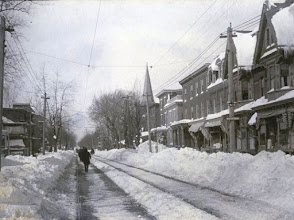Winter '16 / '17 - Arctic Oscillation (AO) Analog Verification
The analog forecasting technique seeks similarities to the AO state during the multi-month run-up to the coming winter with same AO run-ups of winters past.
The NEWxSFC method ranks analog years by their the sum of square errors (SSE) statistic.
Lower SSE errors ==> stronger analog
 |
| Arctic Oscillation (AO) Index Analog Forecast Verification |
In the run-up to Winter '16 / '17 ... the leading analog was '12 / '13 followed by '73 / '74 ... '02 / '03 ... '74 / '75 ... and '88 / '89. A qualitative assessment of the forecast's accuracy would rate the top three analogs as 'poor' ... IOW ... useless.
Winter '12 / '13 NAO oscillated weak negative to strong negative; whereas ... Winter '16 / '17 was essentially a mirror opposite. The closest analogs ... on the basis of the AO remaining positive throughout the three-month forecast period ... were ranked last ('88 / '89) and next to last ('75 / '76).
Conclusion: The top three Winter '16 / '17 AO analogs showed little ... if any ... skill.
---
An alternative forecasting technique looks at the AO's sign for any calendar-year's month preceding the pending winter as a potential leading indicator of the AO's sign for D-J-F period.
Results from a chi-square 'test for independence' infers a statistically significant relationship ... at the 95% confidence level and a p-value < 0.05 ... between NOV's AO sign and AO's sign of the upcoming D-J-F period. IOW ... if NOV's AO is negative (positive) ... then average AO state during the upcoming winter will also be negative (positive); although the classification model is stronger ... i.e., lower false alarm rate ... for the predictor's month with a negative sign than positive.
Conclusion: If NOV's AO is negative ... chances are good the AO state will average negative during D-J-F period.
---
Period-of-record AO data here.























No comments:
Post a Comment